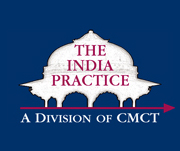Who has it easier when it comes to work-life balance: American professional women or their Indian counterparts?
There is no simple answer to this question. Many of the issues are common to women throughout the global corporate 24x7x365 work world of today: long work hours, challenging schedules, time-consuming commutes, need for childcare and eldercare support systems, the burden of household responsibilities, career path demands vs. family demands, stress-related health problems, and societal attitudes towards women and work. But the specifics differ due to policy, socio-economic, and cultural differences.
Work-Life Balance Policy Differences
Did you know that the United States is weaker in many of its statutory workplace policies for family than most of the other advanced economies and many emerging economies as well? The U.S.A. is one of the few countries in the world that does not have federal laws guaranteeing paid maternity leave, paternity leave, a minimum number of paid sick days a year, or the right to breast-feed a child in the workplace. Nor does the U.S.A. have statutory entitlement to minimum paid holiday leave. Policies on these and other issues differ from state to state and from company to company. By contrast, India has progressive national laws and governmental policies in all these areas. The problem, however, is that the laws are not always rigorously enforced, and implementation is uneven.
India-U.S.A. Socio-Economic Differences
On the plus side for Indian professional women is the availability of low-wage labor. Most middle-class Indian homes have either live-in servants or household help that comes daily to do cleaning, cooking and other household chores. In the United States, this is a luxury available only to the upper-middle class. Another advantage in India is the support of the extended family system, whose network of mutual obligations can provide more practical help than the more atomized and dispersed American family. On the other hand, institutional resources for social welfare needs such as child care and elder care are more extensive in the U.S., infrastructure for commuting and flex-work arrangements is more advanced, and both food preparation and house cleaning are more mechanized.
American and Indian Cultural Attitudes
The area in which the largest gap exists between the United States and India is in cultural attitudes about gender based work and family roles. Indian women have made enormous progress in higher education enrollment, workforce participation, and career advancement within recent years, and many cultural attitudes are catching up with this new reality. For example, family objections to married women or young mothers working outside the home are diminishing. But attitudes towards the fundamental gender inequity that exists when it comes to housework, childcare and eldercare responsibilities (women’s “second shift”) have not changed significantly. The anecdotal stories one hears from Indian women about work-life balance issues circle around this cultural attitude but seldom directly challenge it.
In the U.S.A, the women’s movement of the 1960s and 1970s challenged male privilege in this intimate home arena as well as at work, several generations of women struggled at a very personal level to develop more egalitarian marriages, and boys and girls are now increasingly brought up to think of themselves as equal in both aspirations and responsibilities. The two-bread-winner family may have become the norm in the U.S. primarily for economic reasons, but attitudes towards sharing housework, childcare and eldercare have also undergone a fundamental cultural change.
This change is by no means complete. Behaviors have not fully caught up with attitudes, and women in the U.SA. still bear substantially more of the burden of household and children than do men. But the degree to which cultural attitudes towards gender roles in the family and the home have changed is remarkable.
Every five years since 1977, the Families and Work Institute comes out with a major study of national workforce trends in the U.S. In the most recent report (2008), we learn that a substantial shift in gender roles has occurred in the U.S. for all workforce generations (Matures, Boomers, Gen X, Millennials) since 1998. Attitudes about employed women and mothering have shifted, and fathers are spending more time with their children and taking more overall responsibility for childcare and housework. We also learn, not surprisingly, that work-life conflict has increased significantly for men as well, and that companies therefore cannot assume traditional gender roles in developing family-friendly policies to help their employees succeed both at work and at home.
So who has it easier?
In India and the United States, as elsewhere, work-life balance continues to be a challenge for women, in similar as well as different ways, and progress needs to be made for the sake of women themselves and the society as a whole. Women need to keep pushing for change at work, in society and in their families, step by incremental step, each doing what she can in the specifics of her country’s policy, socio-economic and cultural context.
© Karine Schomer. All Rights Reserved. Permission to reprint is granted, provided the article and byline are printed intact, with all links visible and made live if distributed in electronic form.
Karine Schomer, PhD is President of Change Management Consulting & Training, LLC, and leads The CMCT India Practice, specializing in cross-cultural training and management consulting for doing business with India, competitive advantage through cross-cultural awareness, business etiquette and protocols, cross-cultural communication and teamwork skills, outsourcing management best practices, and offshore team leadership strategies. For more learning resources, check The Working and Managing Across Cultures Blog.



